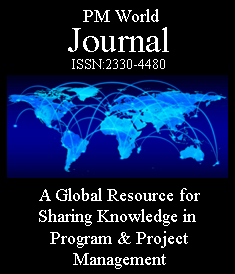What Projects Were Meant to Achieve
ADVISORY ARTICLE
By Mehdi Kadaoui
Brussels, Belgium
1.0 Abstract
Despite decades of advancements in project management methodologies, organizations continue to suffer from a silent but pervasive problem: the loss of strategic intent between project approval and delivery. Project Semantix introduces a lightweight, methodology-agnostic discipline designed to preserve the underlying rationale—the “why”—that justifies transformation initiatives. Rather than tracking tasks or outputs, Semantix tracks logic, ensuring that assumptions, constraints, waivers, and decisions remain visible, traceable, and governable throughout the project lifecycle.
This article outlines six structural shifts in practice—from anchoring decisions upfront to detecting semantic drift in real time—that allow organizations to maintain alignment between strategy and execution. Through real-world examples and practical guidance, it illustrates how Semantix can be embedded within Agile, Waterfall, and hybrid delivery environments without disrupting existing delivery frameworks.
By treating meaning as an asset to be governed—not just implied—Project Semantix offers a powerful new lens for transformation leaders, PMOs, and delivery teams alike. In an era of increasing complexity, it restores the forgotten connection between intent and outcome.
2.0 Introduction
For all the certifications, playbooks, and tools we’ve developed in project management, something vital keeps slipping through the cracks. Projects finish sometimes on time, sometimes not, but too often, we look back and ask: Why did we even do this in the first place? Or worse: Did it actually solve what we meant it to?
You’ve seen it. I’ve lived it. Strategic intent fades between approval and execution. Waivers happen under pressure and then vanish. Rushed decisions (made with good reason) dissolve into the ether. By the time delivery rolls around, the connection between outcome and original rationale is barely visible.
This isn’t a methodology failure. It’s a governance memory failure.
We are losing the logic that once made our projects worth doing.
2.1 What Is Project Semantix?
Let’s get practical for a moment.
Semantix is not a tool or a dashboard. It’s a discipline. One that ensures the original strategic rationale behind your decisions; the “why” behind a choice, exclusion, condition, or risk trade-off, doesn’t vanish as work progresses.
Where traditional delivery tracks tasks, Semantix tracks logic.
It answers questions like:
More…
To read entire article, click here
How to cite this work: Kadaoui, M. (2025). Project SemantiX: A Semantic Layer for Governing What Projects Were Meant to Achieve, PM World Journal, Vol. XIV, Issue IX, September. Available online at https://pmworldlibrary.net/wp-content/uploads/2025/09/pmwj156-Sep2025-Kadaoui-Project-Semantix-2.pdf
About the Author

Mehdi Kadaoui
Brussels, Belgium
![]()
Mehdi Kadaoui is a senior IT and transformation leader with over 17 years of international experience delivering complex enterprise programs across Europe, the Middle East, and North America. His career spans global logistics, SaaS, telecom, and public sector environments, where he has consistently bridged the gap between strategy and execution to drive sustainable digital outcomes.
As a former director and transformation strategist for industry leaders such as DHL, Atlas Copco, Efficy, and Saudi Post Logistics, Mehdi has led ERP modernization, AI/analytics enablement, cloud-native migrations, and IT operating model redesigns. He is known for unifying cross-functional teams (IT, Data, Finance, CX) under shared governance models that enable real-time intelligence, compliance-by-design, and post–go-live value continuity.
Mehdi holds an Engineer’s Degree in Computer Science and a Master’s in Big Data & Systems Integration. He is PMP-certified, a Certified Scrum Product Owner (CSPO), and holds cybersecurity and digital transformation credentials from ISC2 and Stanford University. He has also completed advanced SAP coursework and delivered operational excellence across SAP S/4HANA landscapes in the Americas and Europe.
A contributing writer for CIO.com, Mehdi publishes widely on structural drift, transformation governance, and post-go-live failure modes. He is the author of the “From Intent to Outcome” series—an independent body of work exploring semantic governance, business observability, and transformation integrity frameworks. His published frameworks (Project Semantix, Outcome Observability, Structural Agile) offer new ways to govern meaning, behavior, and value beyond traditional delivery models.
Mehdi is trilingual (French, English, Arabic), based in Brussels, and actively advises global enterprises on how to deliver not just systems, but strategic intent with integrity.
Contact at em.kadaoui@techevolve.be or From Intent to Outcome Canon









